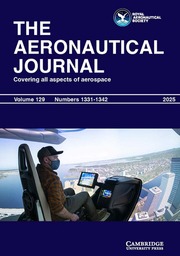No CrossRef data available.
Article contents
Multi-view representation learning for performance-based tactical conflict resolution in urban air mobility
Published online by Cambridge University Press: 30 June 2025
Abstract
Ensuring safety and security in urban air mobility is of utmost significance. As air traffic becomes more concentrated in urban regions, instances of flight conflicts are on the rise. The complex urban morphology, micro-environmental factors and various flight risks significantly impact flight safety. This paper introduces a comprehensive framework to address these challenges. The framework incorporates random 3D city layouts, encompassing city buildings and terrains to establish a corridor graph structure. Leveraging this graph, a multi-view representation learning approach is proposed, which employs graph neural networks, recurrent neural networks (RNN) and contrastive learning to effectively manage tactical conflicts. Through rigorous testing across diverse scenarios, including the incorporation of uncertainties such as wind turbulence, the model’s performance is extensively evaluated. The conclusive results underscore the robustness and efficacy of the proposed approach in ensuring safety and resolving conflicts within the dynamic urban air mobility landscape.
Information
- Type
- Research Article
- Information
- Copyright
- © The Author(s), 2025. Published by Cambridge University Press on behalf of Royal Aeronautical Society


